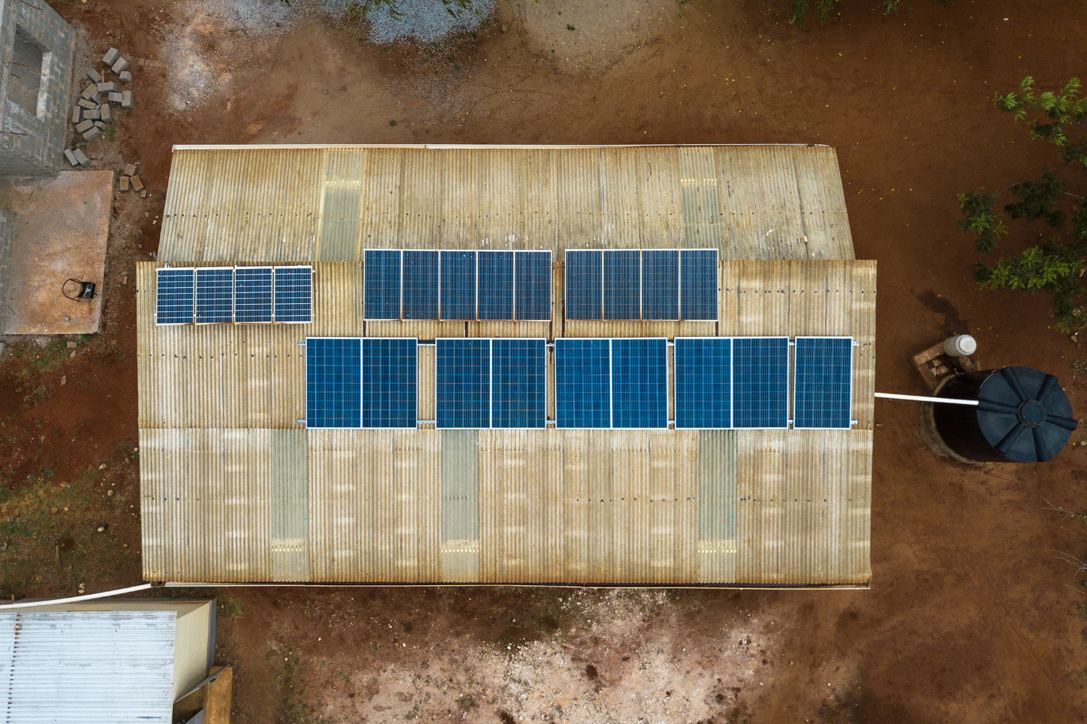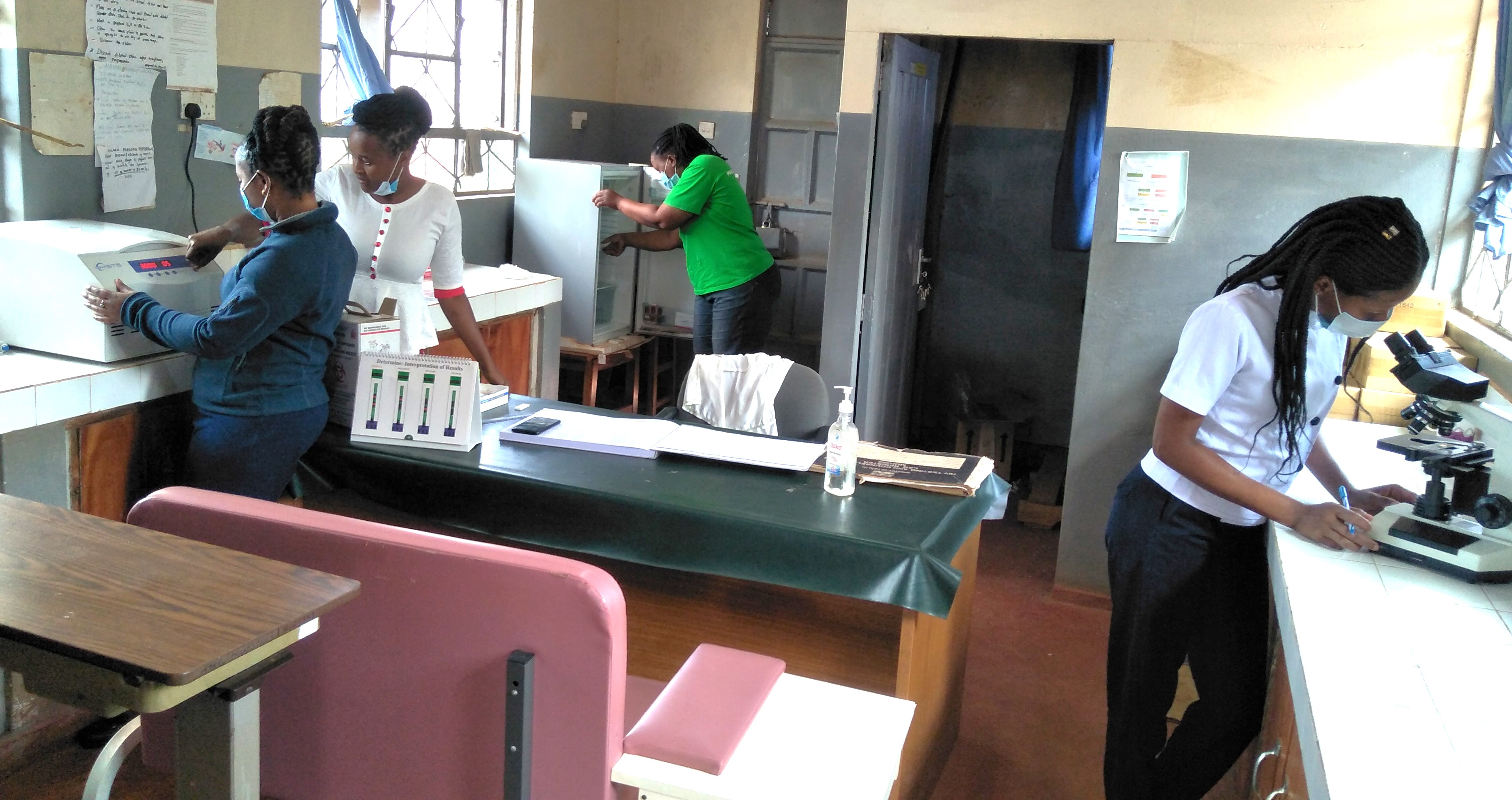Brightening lives: the transformative impact of solar power on remote Kenyan schools and clinics
For communities in remote and deprived regions of Kenya, access to dependable electricity in schools and clinics is a lifeline, facilitating improved medical care and paving the way to a brighter future for learners. Project JUA, a five-year initiative funded by the OVO Foundation and implemented by Energy 4 Impact, has transformed service provision at these crucial institutions through the installation and maintenance of locally-managed solar PV systems with battery storage.
Project JUA benefitted 266 schools and 54 clinics across Kwale, Kilifi, Taita Taveta, Turkana, and Isiolo counties, reaching nearly 90,000 primary and secondary school students and 40,000 primary healthcare patients in the final year before its completion in April 2024. The closing results underscore the paramount importance of ensuring these facilities can count on their lighting and power systems. Not only has the project enhanced outcomes for both pupils and patients, it has also yielded much-needed cost efficiencies for the institutions, bolstered staff retention through improved working conditions, and helped curb harmful CO2 emissions, amongst other benefits.
After five years, Energy 4 Impact’s involvement is drawing to a close, but we have assured the sustainability of the infrastructure by nurturing institutional self-reliance and establishing partnerships between service providers and the supported institutions.
Lighting the way towards educational success
The socio-economic disparity between rural and urban areas in sub-Saharan countries is compounded by the lack of reliable electricity in rural schools. As a growing proportion of occupations demand technical proficiency and digital literacy, pupils without access to online learning or ICT equipment are at risk of lagging behind, exacerbating the divide. Additionally, rural educators face challenges when unable to use the electronic equipment and teaching aids that many urban schools take for granted, or even switch on the lights outside daylight hours.
Following the installation of their solar system through Project JUA, Isiolo Samburu Complex Primary in Isiolo county was able to use electric lighting in classrooms in early mornings and evenings outside regular school hours. Valuable for reinforcing and expanding learning, these additional classes contributed to an impressive uptick in pupil scores under the Kenyan primary curriculum, from 230 to 285, well above the average score of 250. Isiolo Samburu Complex Primary isn't alone in this transformation. Thanks to Project JUA, schools have extended their teaching hours from seven to eight per day on average, with the number offering evening classes rising from 139 to 194.
The introduction of reliable electricity also allowed Isiolo Samburu Complex Primary to revive 25 government-supplied tablets, which had been gathering dust in storage. With the hiring of an ICT teacher and the resumption of computer classes, Headteacher Julius Gitonga has observed the striking impact of digital learning on student motivation:
Our pupils prefer interactive tablets over traditional textbooks, and their improved engagement allows teachers to deliver more effective lessons. Whether exploring topics like volcanic formations or tackling mathematical concepts, students gain learning autonomy by navigating the internet for relevant information.
The introduction of solar power in participating schools has significantly enhanced ICT accessibility across the board: the number of computers in use has surged from 23 to 313, schools equipped with internet access have risen from 127 to 208, and the tally of electrical appliances has risen from 9,401 to 10,170 (including computers, printers, photocopiers, televisions, wi-fi routers, and projectors). Despite challenges posed by outside factors such as the Covid-19 pandemic and drought, which led to fluctuations in pupil numbers, 72% of schools report an increase in enrolment, citing the availability of electricity as a driving force behind this trend.
Electricity enables modern primary healthcare
When health facilities lack power or grapple with frequent grid blackouts, local communities are left highly vulnerable. Quality healthcare requires reliable electricity to operate the equipment needed for diagnosis and treatment, but rural clinics often cannot heat water or even turn on the lights. Night-time arrivals, typically expectant mothers, often find clinics shrouded in darkness, with staff carrying out critical procedures by the faint illumination of candles or mobile phones.
Makutano dispensary, a primary healthcare clinic in Turkana county, used to be one of them. Since the introduction of reliable electricity, the clinic no longer routinely refers mothers in labour onto better equipped facilities further afield, sparing them an often perilous and costly onward journey. Fernandez Lomoru, the nurse in charge, says
the clinic is now a safer environment for both mothers and babies.
Thanks to their new security lights, expectant women now feel more reassured about arriving at night. Staff can also rely on the oxygen concentrator to aid premature babies and newborns struggling to breathe. The clinic is now attracting expectant mothers from across a broader catchment area, more than doubling their annual number of deliveries.
Many other clinics powered by Project JUA have experienced a similar turnaround: the overall number of night-time births increased from 75 to 1,338 per month. The proportion of health clinics offering 24-hour emergency services rose from 1% to 67% and the number of patient cases attended per month during night hours (between 6pm and 6am) increased from 6 to 12,442.
Electronic medical devices are the foundation of primary healthcare and a well-equipped clinic relies on a range of equipment, typically including blood pressure monitors, microscopes, autoclaves, ultrasounds, water purifiers, suction machines, nebulisers, sterilisers and vaccine fridges. Following the inception of Project JUA, the number of clinics using such technology has shot up from 77 to 170.
Equipped with a new refrigerator to maintain laboratory samples and vaccines for diseases like measles, tuberculosis, pneumonia, polio, and tetanus at the optimal temperature, Makutano dispensary has drastically reduced vaccine spoilage rates (with clinics overall reporting a 90% decrease in vaccine wastage). The clinic now regularly utilises its centrifuge machine for analysing blood samples and a nebulizer machine for treating asthmatic patients. Fernandez Lomoru also attests that tuberculosis has become less prevalent in the community since the clinic started using its microscope to conduct more frequent analyses:
We used to diagnose between three and five cases per month, but now it's more like a single case.
Institutions can preserve budgets, retain staff and safeguard the environment
Rural institutions contending with unreliable grid electricity often face rising expenses and staffing shortfalls. Repairing equipment damaged during grid power outages or spikes often incurs substantial costs, while clinics resorting to backup generators must bear the burden of expensive petrol or diesel. Overwhelmed staff are compelled to allocate time and resources to finding makeshift solutions just to carry out their duties.
Prior to the installation of their solar PV system, teachers at Daaba Primary regularly travelled into Isiolo town to charge their devices and print documents, incurring an average cost of $73 per month. Headteacher Bernard Eris acknowledges that many teachers considered their assignment to the school as "punitive" and sought transfers due to the lack of network and power. Teachers can now print documents and charge their devices conveniently and at no cost, minimising disruption and loss of teaching time.
Following the introduction of solar power, Daaba Primary and other institutions have experienced a notable increase in staff morale, allowing them to attract more qualified personnel which enhances service delivery. The total staff count rose from 3,070 to 3,137, while the annual turnover rate decreased from 20% to 15%. Fernandez Lomoru from Makutano dispensary attests that
staff now feel safer and more comfortable at night, can charge their phones, and even enjoy music during downtime, all contributing to reduced work stress.
Furthermore, Project JUA has had a notable environmental impact. The reduction of reliance on kerosene for classroom lighting in schools has led to a significant decrease in indoor air pollution. On average, these schools have cumulatively reduced carbon emissions by 2,789 kgCO2e per month. The transition to solar power has proven to be financially advantageous, with schools and clinics saving an average of £8540 annually by moving away from petrol and diesel generators.
Ensuring institutions can thrive after Project JUA
An essential aspect of Project JUA is its commitment to ensuring long-term success and sustainability beyond the project's lifespan. Recognising that self-reliance is integral to sustainable ownership models, Energy 4 Impact prioritised fostering this attribute at institutions. Project manager Pancras Odhiambo highlights,
It became clear, during the project's later stages, that we needed to create a plan for institutions to independently handle the operations and maintenance of the systems once our involvement had phased out.
To guarantee the continued functionality of solar PV systems, Project JUA has implemented several strategies. It provided comprehensive training sessions to site staff on basic maintenance, and offered mentorship services to institutions to ensure they possess the necessary skills to upkeep the systems. Additionally, Project JUA has assisted sites in identifying revenue streams to fund future maintenance, with some institutions planning income-generating activities such as phone charging, photocopying and printing, event hosting, small-scale farming and irrigation water pumping, cybercafés, and barber shops.
Nonetheless, garnering broader support from other stakeholders is also crucial. Project JUA has engaged county governments to prepare for long-term operations and maintenance (O&M) and has trained local county technicians who are easily accessible to institutions. Moreover, the project has initiated discussions with a reputable service provider to potentially undertake operation and maintenance contracts for certain sites.
With greater confidence in their future, some institutions are developing ambitious plans. Many facilities are intent on investing in more electric equipment, building staff quarters or extending electricity to other buildings on site. A number of schools are considering opening dormitories for boarders and building computer and science labs.
Additionally, numerous institutions are strengthening ties with their neighbouring communities. Some are organizing community events during the evenings, while others welcome locals to charge their phones and other devices free of charge. The introduction of bright lighting at clinics has also contributed to enhanced nighttime safety and security in surrounding neighbourhoods.
Pancras Odhiambo reflects,
Project JUA has delivered transformative results for participating institutions. With so many schools and clinics remaining unelectrified, there is vast potential to expand this approach across Kenya and sub-Saharan Africa, positively and sustainably impacting lives in rural communities.




